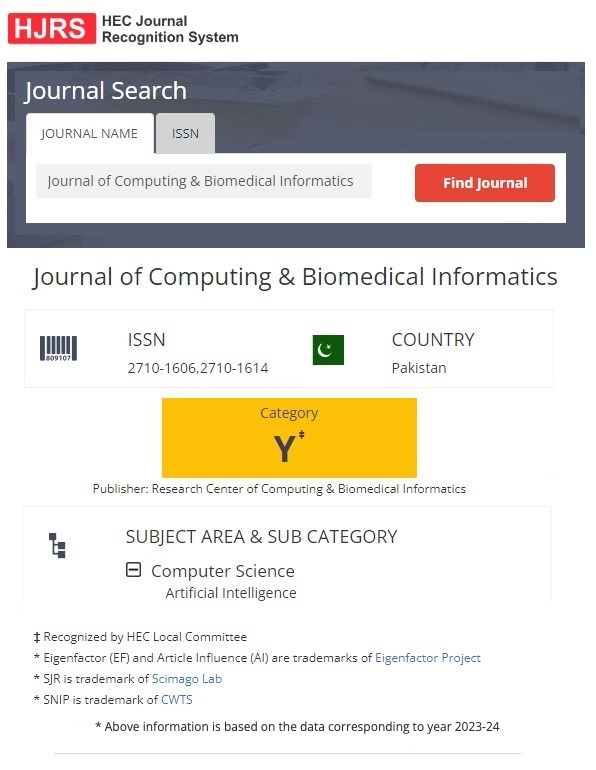Citation Count Prediction of Scholarly Articles
Keywords:
Citation Count Prediction, Scientific Impact, Field of Study Trend, RegressionAbstract
Assessing the citation count is crucial for gauging the impact of scientific publications. Predicting future citation counts can assist researchers in discovering references and delineating research areas. In our study, we introduce a novel model called FoS Trend based Citation Count Prediction (FTCCP), which aims to forecast the citation count of scientific articles by leveraging field of study (FoS) trends and early citation counts. By analyzing the citation patterns within the first few years post-publication (specifically 1-3 years and 1-5 years), FTCCP extrapolates the long-term citation impact of an article. Notably, we focus solely on the FoS trend and Early Citation Count without considering other factors such as authorship, publication venue, or journal. While some prior research incorporates a broader range of features for citation prediction, we intentionally keep our model simple to ensure its applicability across diverse research domains.
Our investigation revolves around two feature categories for FTCCP: FoS trend and Early Citation Count. We employ Multiple Linear Regression to develop the citation count prediction model. Results from experiments conducted on the Microsoft Academic Graph (MAG) dataset demonstrate promising outcomes, indicating the effectiveness of FTCCP when utilizing FoS trend and Early Citation Count compared to models relying solely on citation history, as evidenced by higher R2 scores. Furthermore, our proposed features exhibit superior performance compared to traditional ones.
Downloads
Published
How to Cite
Issue
Section
License
This is an open Access Article published by Research Center of Computing & Biomedical Informatics (RCBI), Lahore, Pakistan under CCBY 4.0 International License





